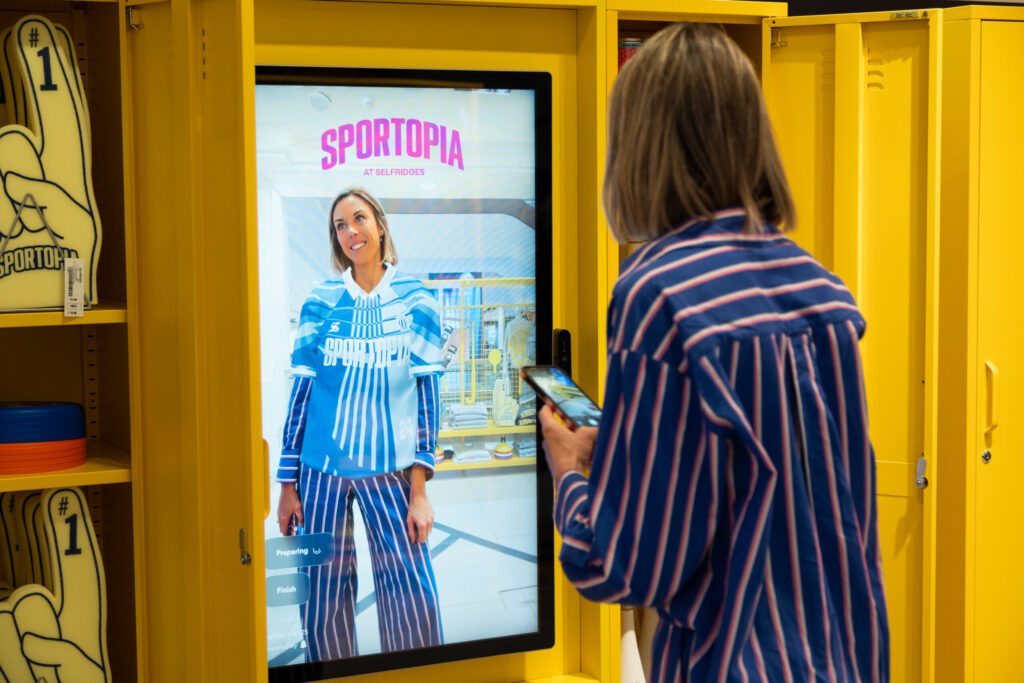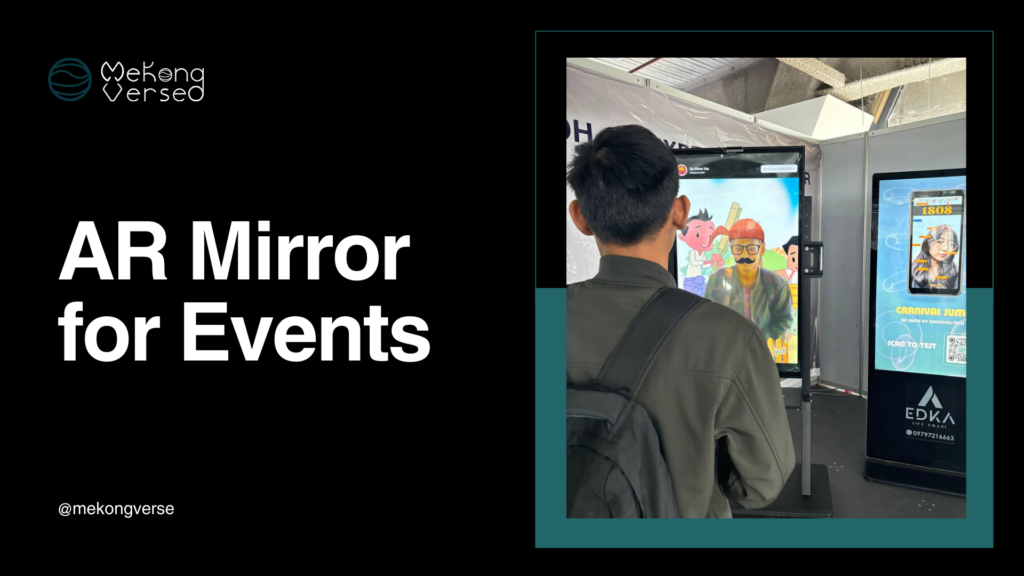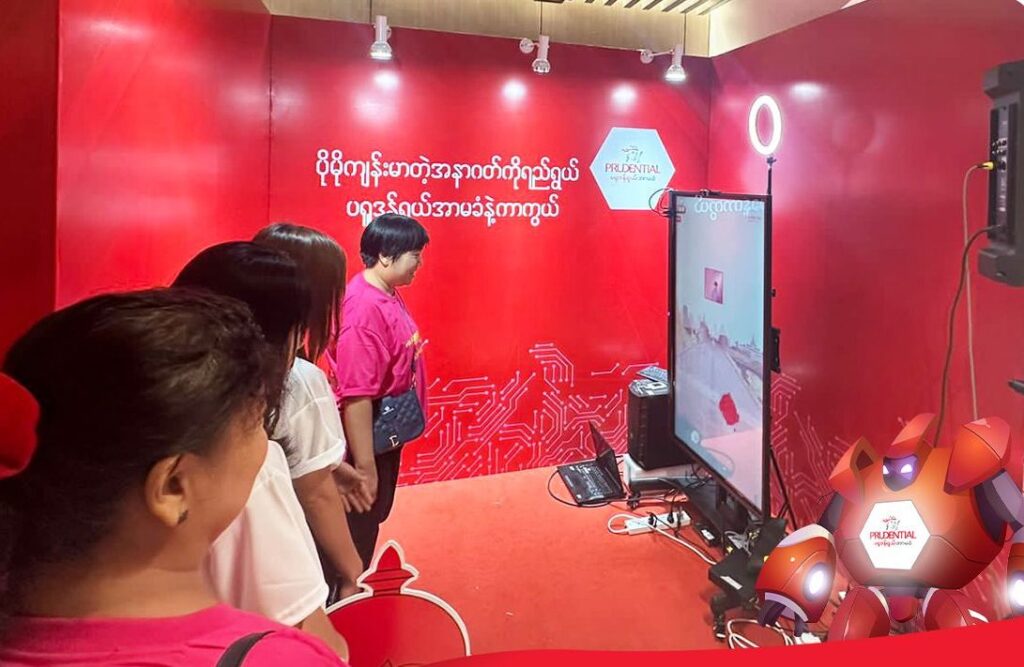In today’s competitive retail landscape, getting customers through the door is harder than ever. Despite the quality of a brand’s products or the appeal of its store layout, retail spaces face an uphill battle in drawing consistent foot traffic. While online shopping offers convenience, brick-and-mortar stores must focus on delivering unique experiences that make in-person visits worthwhile. One powerful solution to this challenge is the use of AR Mirrors – an innovation designed to attract, engage, and retain customers in a way traditional methods can’t match.
Why Increasing Foot Traffic Remains a Major Challenge for Retailers
Several factors contribute to the struggle for foot traffic in physical retail spaces:
- Rise of E-commerce: With the ease of online shopping, consumers are less inclined to visit stores unless there’s a compelling reason.
- Competition: From pop-up shops to established brands, retail competition is fierce. Customers often have multiple options within a short distance.
- Changing Customer Expectations: Shoppers, particularly Gen Z and Millennials, seek interactive, personalized experiences rather than traditional shopping.
- Seasonal Dips and Inconsistent Traffic: Retailers often experience slow periods outside peak shopping seasons, impacting sales and overall profitability.
These factors mean retailers must work harder to bring people into stores. Here’s where AR (Augmented Reality) Mirrors come into play.
How AR Mirrors Can Help Drive Foot Traffic
AR Mirrors provide a dynamic, immersive experience that elevates the in-store experience, attracting new customers and keeping existing ones engaged. AR Mirrors add an element of novelty and excitement to the shopping experience, transforming routine visits into memorable outings. By allowing customers to virtually try on products or participate in interactive games, AR mirrors draw attention and make a visit to the store worthwhile. This unique experience gives customers a reason to choose in-store shopping over online browsing.
Here’s how AR mirrors can solve foot traffic challenges:
Making In-Store Activations that attract footfall
An AR Mirror installation can serve as an exciting in-store activation that draws people in, piquing the curiosity of those passing by. In-store activations like limited-time events or exclusive product launches are often promoted through traditional signage or social media. However, incorporating AR Mirrors into these activations gives retailers a new way to engage customers. For example, an AR Mirror can be programmed to reveal special discounts, exclusive digital try-ons, or even interactive product tutorials, creating a memorable event that customers won’t want to miss. These unique activations can add excitement and urgency, driving foot traffic and enticing visitors to stay longer. Here is how Nike used AR Mirror for in-store activation.
Enabling Gamification to Increase In-Store Time
Retailers can use AR mirrors for gamified experiences that encourage in-store exploration and interaction. For instance, an AR scavenger hunt or mini-game where customers collect virtual rewards or discounts can make the shopping experience more enjoyable. Not only does this make the store visit more memorable, but it also increases time spent in-store, which is directly linked to higher sales conversions.
Encouraging Social Sharing and Word-of-Mouth Marketing
AR Mirrors create “Instagrammable” moments that customers are likely to share on social media. By providing photo options or interactive AR effects, customers are encouraged to snap a picture, leading to organic social media exposure. This user-generated content increases visibility for the store and attracts a broader audience who may want to experience the excitement for themselves.
Attracting Passersby with AR Mirror Storefronts
Placing AR Mirrors strategically at storefronts can capture the interest of passersby. These mirrors invite people to stop, engage, and explore – all before they’ve even stepped inside. Whether they’re trying on virtual accessories or exploring new styles, the interactive nature of an AR mirror display creates a “wow” moment that piques curiosity and encourages people to enter.
Enhancing Product Discovery and Engagement
AR Mirrors allow customers to discover products in a fun, low-pressure way. Shoppers can see how clothes, accessories, or makeup look without physically trying them on, which is particularly appealing for fashion and beauty brands. This effortless engagement keeps customers interested longer, helping to increase dwell time and boosting the chances of a purchase.
Providing Data-Driven Insights for Personalized Customer Experiences
AR mirrors aren’t just interactive; they also provide valuable data insights into customer preferences and behavior. With analytics on what products are tried on most frequently, which styles are popular, and how long customers interact with the mirror, retailers can tailor in-store offerings to better match what customers want, ultimately enhancing the appeal of in-store visits.
Case Study: Boosting Engagement with AR Mirrors
Consider Adidas’ use of AR mirrors, which they installed in different store sections for men, women, and children. Each mirror had unique interactive games and try-on experiences tailored to its audience, which not only increased foot traffic but also improved engagement and conversion rates. Customers were drawn in by the novelty of the experience and stayed to try on products and participate in challenges, which they could share on social media – amplifying Adidas’ brand presence and appeal.
Implementing AR Mirrors in Your Store: What to Consider
To make the most of AR mirrors, retailers should consider the following:
- Strategic Placement: Place AR mirrors at entrances, near popular sections, or in storefront windows to maximize visibility.
- Customizable AR Content: Work with AR providers like Mekongverse to customize mirror experiences based on product offerings, seasonal campaigns, or current marketing goals.
- Encouraging Social Media Sharing: Add branding and hashtags to AR mirror experiences, encouraging customers to share their interactions and creating a natural buzz around your store.
- Data Collection for Future Marketing: Leverage the data insights provided by AR mirrors to understand customer preferences and personalize marketing efforts, enhancing future engagement and loyalty.
Closing Thoughts
The challenge of increasing foot traffic is real, but by embracing innovative solutions like AR Mirrors, retailers can offer the unique, immersive experiences that today’s customers crave. AR mirrors not only captivate shoppers but also deepen their engagement with the brand, driving both immediate sales and long-term loyalty. As customer expectations evolve, retailers who leverage AR to enhance their in-store experiences will be well-positioned to thrive in an increasingly digital world.
Ready to make AR mirrors a part of your in-store strategy? Mekongverse can help you transform foot traffic challenges into opportunities for engagement and growth.



